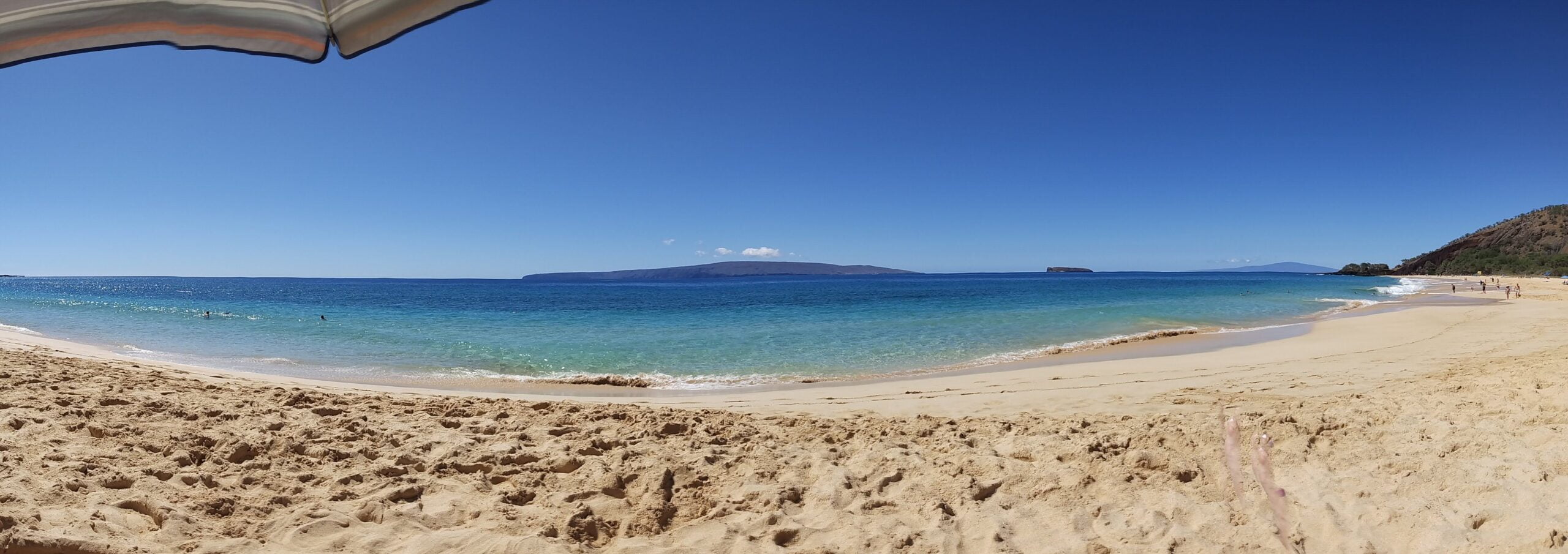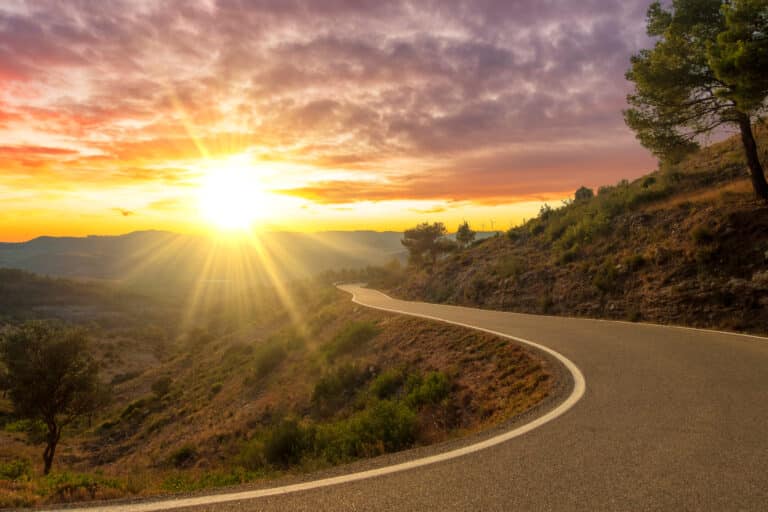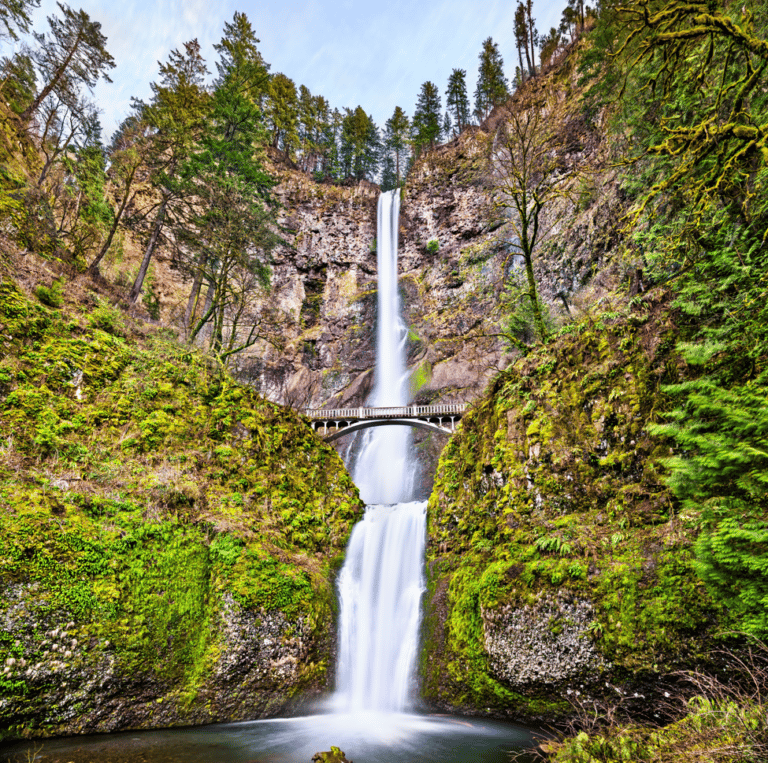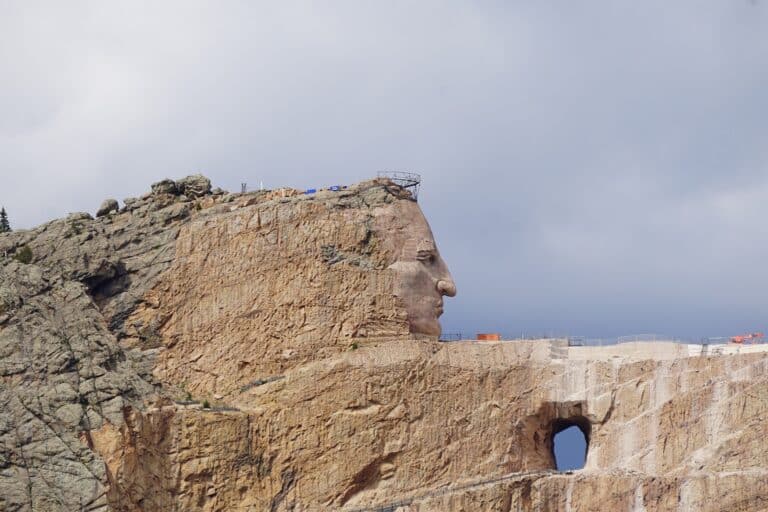Utah’s Hidden 5 – Emerse Yourself Into Road Trip Euphoria
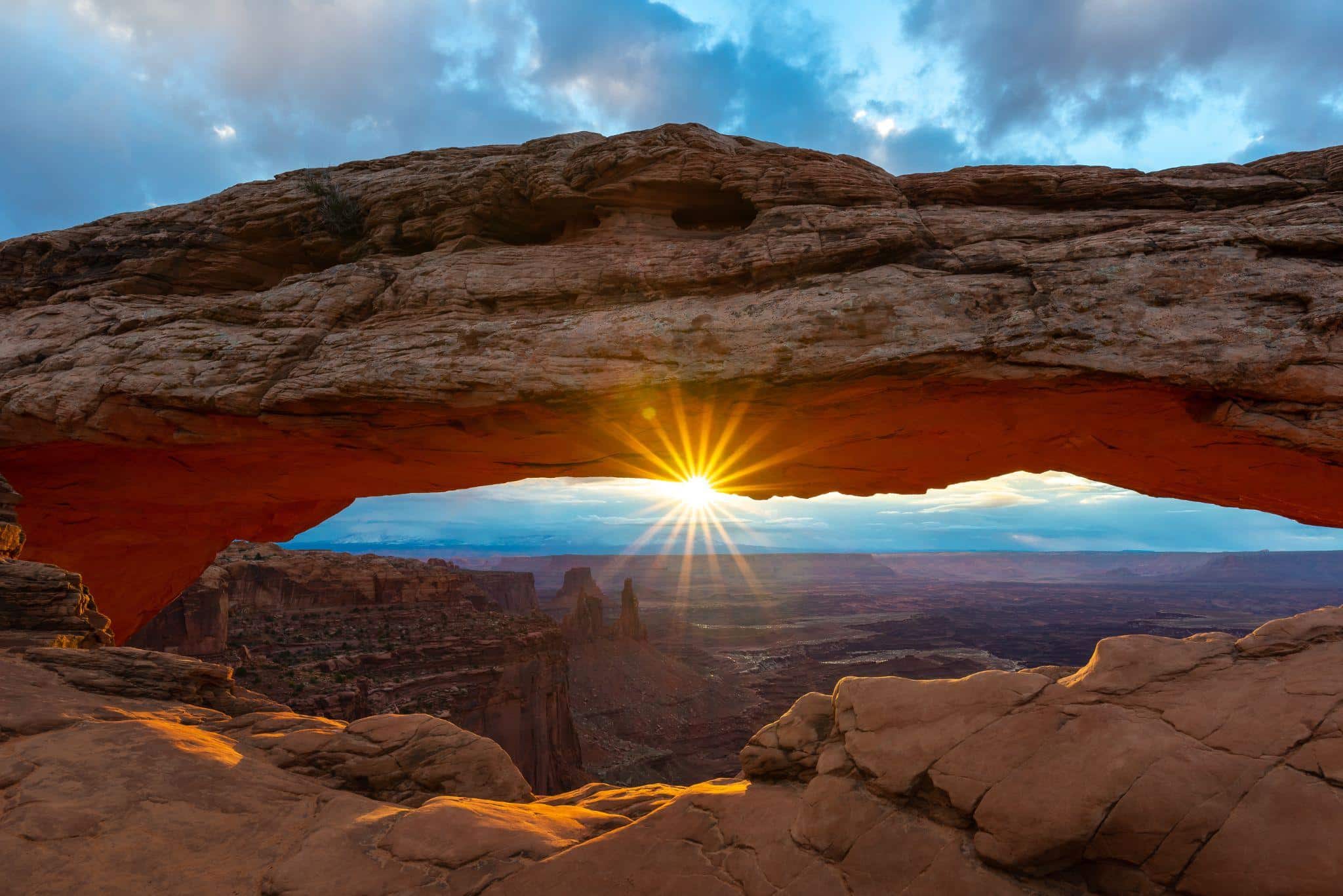
Our content may include affiliate links, through which we earn a small commission on purchases. Want to learn more about us? Read here.
Congratulations on saving money and being ready for your next trip! Now is the perfect time to embark on the ultimate national park road trip and explore some of the most breathtaking natural wonders in the United States.
From the towering rock formations of Arches National Park, the red rock canyons of Zion National Park, and the stunning landscapes of Bryce Canyon, Canyonlands, and Capitol Reef National Parks, the Utah Mighty 5 offers something for every nature lover.
With a well-planned itinerary and a spirit of adventure, you’re sure to have an unforgettable experience on your national park road trip. So pack your bags, hit the road, and prepare for the adventure of a lifetime!
Southern and Central Utah has some of the most beautiful natural landscapes. The Mighty 5 national parks showcase the state’s breathtaking scenery. Each park offers unique and awe-inspiring vistas that every nature lover should experience.
If you plan to embark on a Utah Mighty 5 road trip, this Utah National Parks itinerary will help you explore these national parks to the fullest. So what are you waiting for? Visit Utah!
Getting to Your First Destination – Arches National Park
Arches National Park is located in eastern Utah, approximately 236 miles southeast of Salt Lake City. While there are no commercial airports in Moab, the closest town to the park, several transportation options exist for getting there from Salt Lake City International Airport.
- Rent a Car: Renting a car is one of the most convenient ways to get to Arches National Park from Salt Lake City. All major car rental companies have offices at Salt Lake City International Airport, so you can easily rent a car and drive to the park. The drive takes approximately four hours and takes you through beautiful scenery, including the Wasatch Mountains and the Colorado River. If you go this route and rent a car, purchase your annual National Park Pass for $80. This will get you into all five parks; otherwise, it’ll cost you about $35 at each park (this pass works at all the National Parks in the U.S.).
- Take a Shuttle: If you prefer not to drive, several shuttle companies offer transportation from Salt Lake City to Arches National Park. One of the most popular shuttle services is Canyonlands Shuttle, which offers daily shuttle service to Moab, where you can then take a taxi or rental car to Arches National Park. The shuttle ride takes approximately five hours.
- Take a Bus: Another option for getting to Arches National Park from Salt Lake City is to take a bus. Greyhound Bus Lines operates a daily bus service between Salt Lake City and Moab. You can take a taxi or rental car from Moab to Arches National Park. The bus ride takes approximately six hours.
- Take a Private Transfer: If you prefer a more personalized and private transportation option, you can book a private transfer from Salt Lake City to Arches National Park. Many private transportation companies offer this service, typically including a private vehicle and driver who will take you directly to the park.
No matter which transportation option you choose, it’s important to plan ahead and make reservations in advance, especially during the peak travel season. Additionally, check the weather and road conditions before departing, as weather and road closures can impact travel times.
With some planning and preparation, you can easily get to Arches National Park from Salt Lake City and explore this stunning park.
If you’d rather fly into Las Vegas, you can rent a car there and start your Utah road trip in reverse. Since you’ll be heading out of or back to Las Vegas, you can add the Valley of Fire State Park in Nevada or the Grand Canyon to your road trip.
Stop #1: Arches National Park
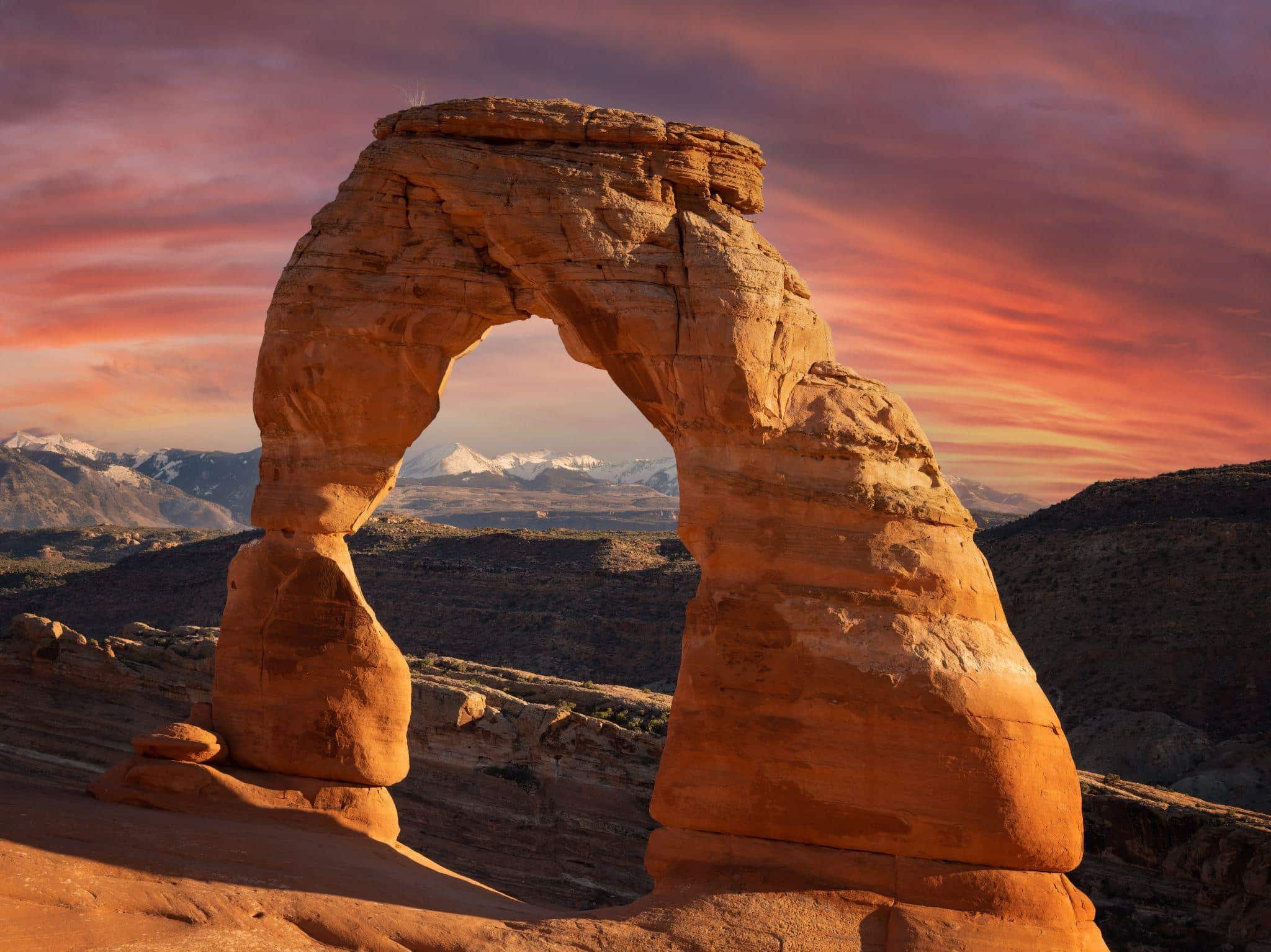
Start your Utah national parks road trip with a visit to Arches National Park, located near Moab, Utah. Arches are famous for their stunning red rock formations and natural beauty formed by millions of years of erosion. The park features over 2,000 arches, making it a paradise for photographers and hikers.
Begin your visit with a scenic drive through the park’s main road, Arches National Park Rd,, which leads to many of the park’s iconic landmarks, such as Balanced Rock, Double Arch, Landscape Arch, and Delicate Arch.
To get a closer look at some of the park’s arches, hike on one of the many trails that crisscross the park. Some of the most popular hikes include the Delicate Arch Trail, the Devils Garden Trail, the Windows Loop Trail, and the Tower Arch Trail.
If you are a mountain biking enthusiast, check out what Moab offers, often called the “mountain biking capital of the United States.” While there is no mountain biking within the national parks, all the parks have easy access to thrilling trails.
Little known fact: Arches is home to several important cultural and historical sites, including ancient petroglyphs and ruins left behind by the region’s earliest inhabitants. These sites provide a glimpse into the lives and cultures of the Ancestral Puebloan and Fremont peoples who lived there thousands of years ago.
Stop #2: Canyonlands National Park
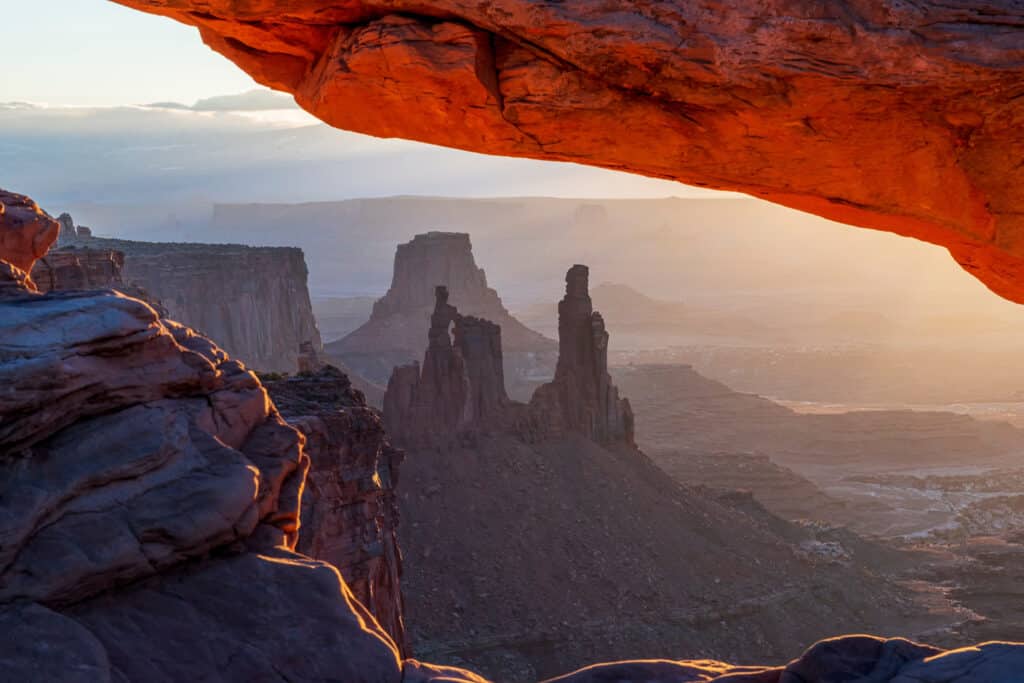
- Canyonlands National Park is approximately 30 miles from Arches National Park.
On stop number two, head to Canyonlands National Park near Moab, Utah. Canyonlands is known for its stunning canyons, mesas, and buttes carved by the Colorado River and its tributaries. The park has four districts, Island in the Sky, The Needles, The Maze, and the Rivers, each offering unique and spectacular vistas.
Begin your visit with a drive along the park’s main road, Grand View Point Rd, which leads to many of the park’s notable landmarks, such as the Mesa Arch and the Grand View Point Overlook, Buck Canyon Overlook, or the Green River and Colorado Rivers confluence. To look closer at the park’s canyons and formations, hike on one of the many trails that wind through the park.
The Neck Spring Trail and the Syncline Loop Trail are both excellent options. Another option is the Druid Arch Trail, although it is known to be a more strenuous hike.
Little known fact: Canyonlands contains one of the world’s largest concentrations of arches. While nearby Arches National Park is more famous for its arches, Canyonlands is home to over 80 natural arches, including the impressive Mesa Arch in the Island in the Sky district. Visitors can explore these natural wonders on hikes and scenic drives throughout the park.
Stop #3: Capitol Reef National Park
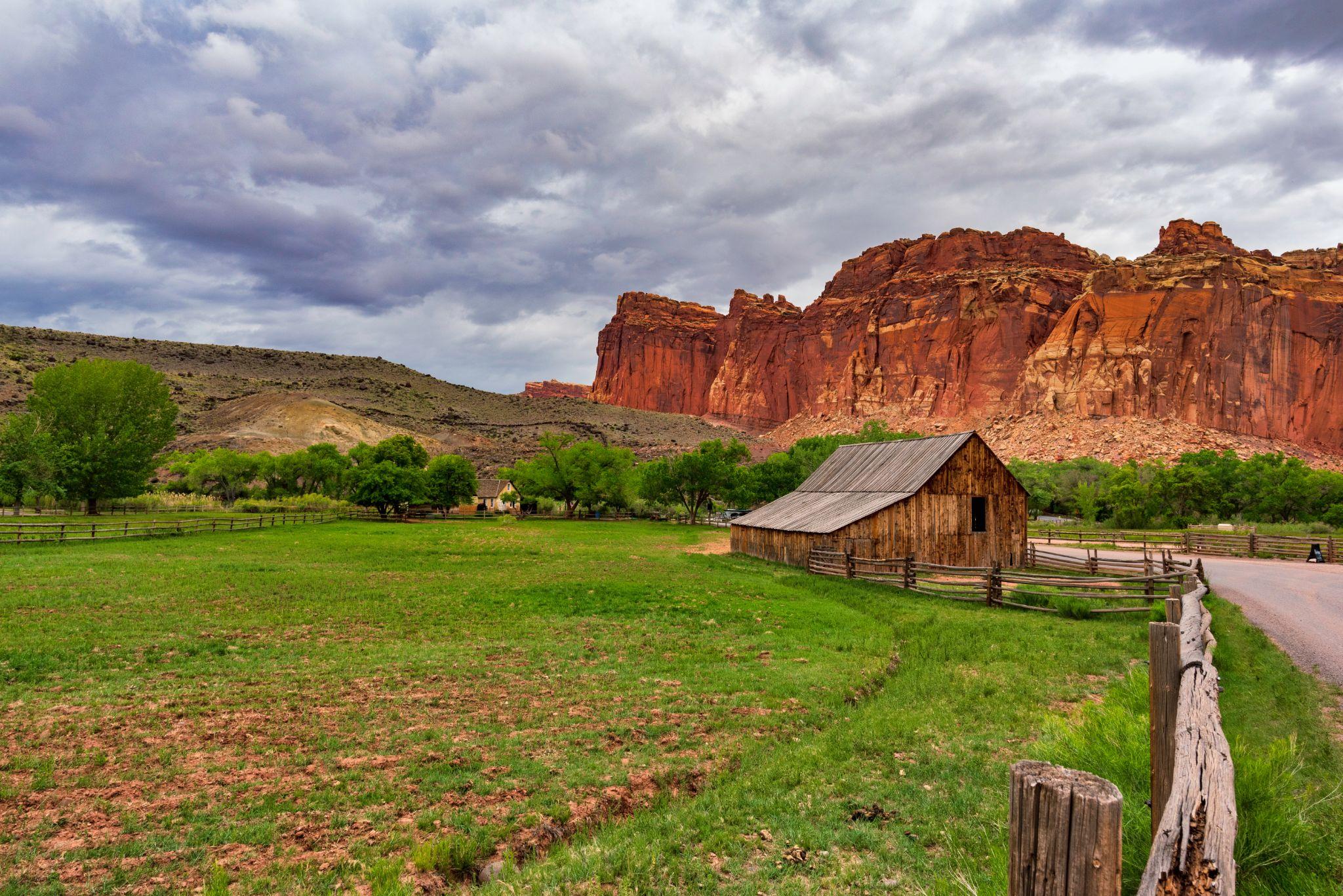
- Capitol Reef National Park is approximately 120 miles from Canyonlands, and the drive takes you through the scenic Highway 24. Along the way, you’ll see stunning red rock formations and canyons.
Next on the itinerary is Capitol Reef National Park, which is located in south-central Utah. Capitol Reef is known for its stunning and unique rock formations, colorful canyons, and unique geology. The park’s name comes from its resemblance to a giant reef-like structure that can be seen from a distance.
Begin your visit with a drive along Capitol Reef Scenic Drive, which offers access to many of the park’s notable landmarks, such as the Goosenecks Overlook and the Capitol Reef Visitor Center. To get a closer look at the park’s canyons and formations, take a hike on one of the many trails that crisscross the park. The Hickman Bridge Trail and the Cohab Canyon Trail are both excellent options.
Little known fact: Capitol Reef is also home to several ancient petroglyphs and pictographs, which are rock art created by the indigenous people who lived in the area thousands of years ago. These images provide a glimpse into the culture and history of the region’s earliest inhabitants, and they are a fascinating and important part of the park’s cultural heritage.
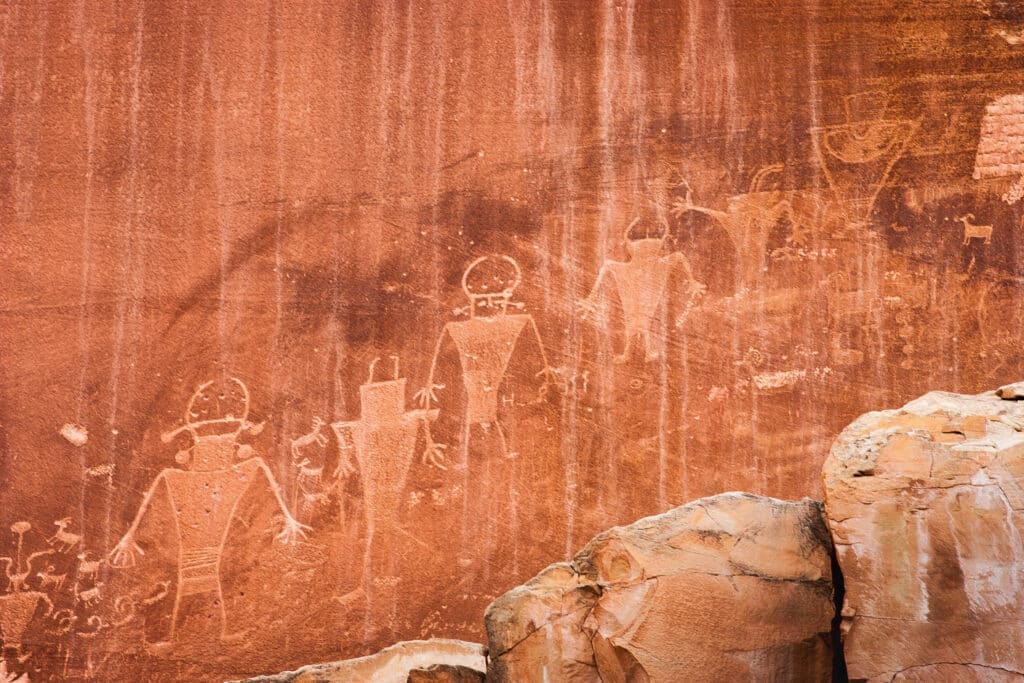
Stop #4: Bryce Canyon National Park
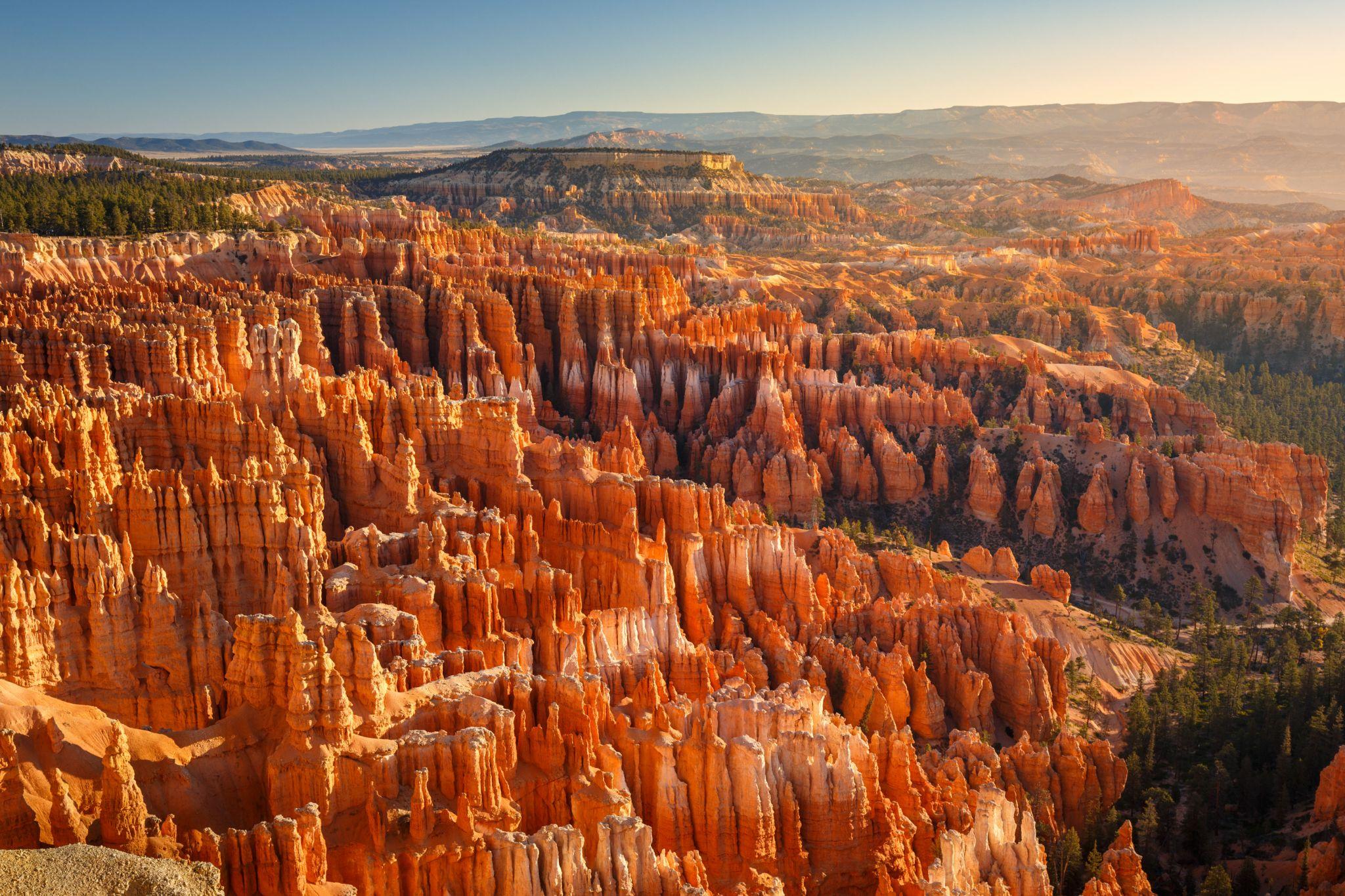
- Bryce Canyon National Park is approximately 130 miles from Capitol Reef, and the drive takes you through the beautiful Grand Staircase-Escalante National Monument. Stop at the Anasazi State Park Museum in Boulder and the Escalante Petrified Forest State Park if time allows.
For stop number four, head to Bryce Canyon National Park, which is located in southwestern Utah. Bryce Canyon is known for its unique hoodoo rock formations, which are tall spires of rock that have been carved by erosion. The park’s stunning landscape results from millions of years of geological activity, making it a must-visit for geology enthusiasts.
Start your visit with a scenic drive along the park’s main road, Bryce Canyon Rd., which leads to many of the park’s overlooks and viewpoints. Some popular overlooks include Bryce Point, Sunrise Point, and Sunset Point. To get an up-close look at the park’s hoodoos, hike on one of the many trails that wind through the park.
The Navajo Loop Trail, Fairyland Loop Trail, and the Queen’s Garden Trail are excellent options. An easy option is to stroll along the Bryce Canyon Rim Trail, a nice wide paved trail with several lookout spots for viewing.
Little known fact: The park contains the largest collection of hoodoos in the world.
Stop #5: Zion National Park
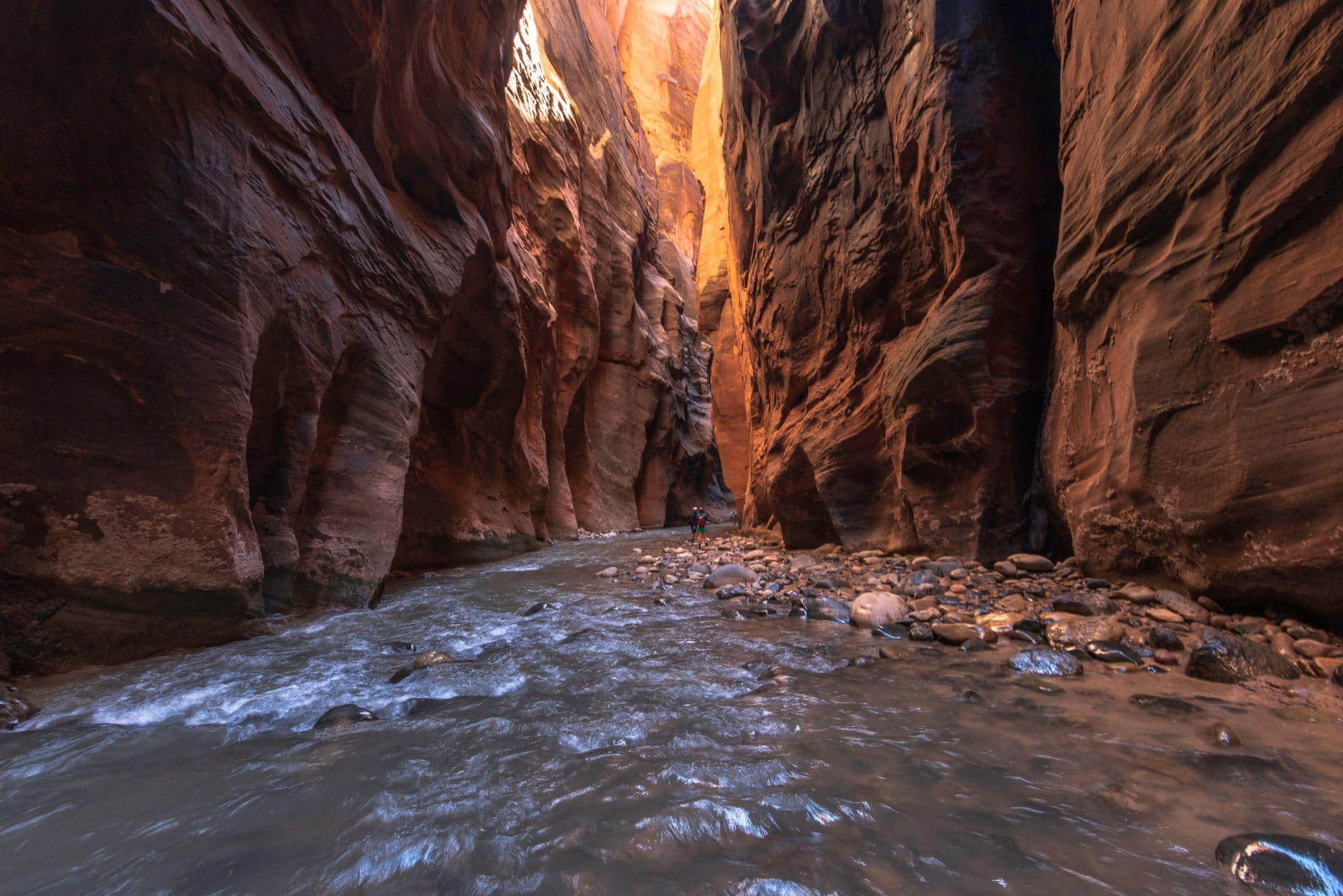
- Drive from Bryce Canyon National Park to Zion National Park via Highway 89: This route takes you through Utah’s most scenic landscapes, including the Grand Staircase-Escalante National Monument and Kanab. You can stop at several points of interest, such as the Coral Pink Sand Dunes State Park and the Best Friends Animal Sanctuary in Kanab. The total distance is approximately 85 miles.
On the final day of your Utah national parks road trip, head to Zion National Park, which is located in southwestern Utah. Zion is known for its stunning canyons, towering cliffs, and emerald pools, making it one of the most visited national parks in the country.
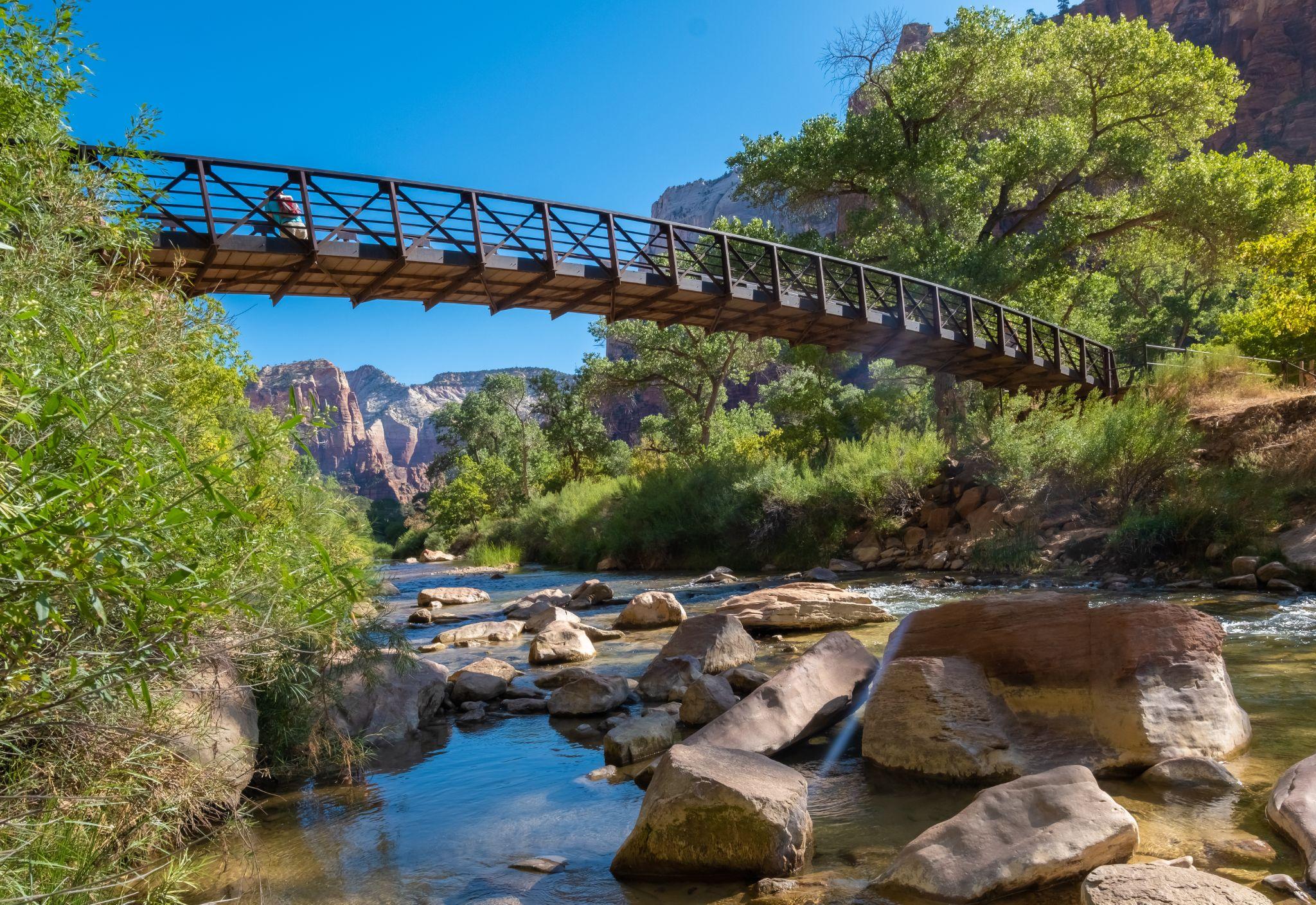
Begin your visit with a drive along the park’s main road, Zion Park Blvd, which leads to many of the park’s notable landmarks, such as the Court of the Patriarchs and the Weeping Rock Trailhead. To look closer at the park’s canyons and formations, hike on one of the many hiking trails that wind through the park. The Angel’s Landing Trail and the Narrows Trail are both excellent options.
Other notable spots to check out are the Canyon Junction Bridge overlooking the Virgin River and Canyon Overlook Trail to admire the towering canyon walls or the West Rim Trail. For the more adventurous, check out Angels Landing; you will not be disappointed!
Little known fact: Zion is also home to a diverse array of plant and animal life, including several species endemic to the park.
One such species is the Zion snail (Zionia ornata), a tiny, spiral-shaped snail found only within the park’s boundaries. This snail is considered a “living fossil,” as it has remained virtually unchanged for millions of years. It is only found in a few isolated areas within the park and is considered a rare and endangered species.
Another unique species found in Zion National Park is the Kaibab squirrel (Sciurus kaibabensis), a subspecies of the familiar North American red squirrel. These squirrels are larger than their mainland counterparts and have distinctive black and white tails. They are found only in the park’s higher elevations and are an important part of its ecosystem.
Tips for Planning Your Utah National Parks Road Trip
Here are some tips to help you plan your Utah national parks road trip:
- Plan your itinerary ahead of time: It’s important to plan your itinerary ahead of time to ensure that you can see all the sights you want to see. Make sure to account for driving times between the parks, and plan for extra time in case of unexpected delays.
- Consider the time of year: Utah’s national parks can get crowded during peak travel season, typically from May to September. If you want to avoid the crowds, consider visiting during the shoulder season in April or October.
- Be prepared for the weather: Utah’s national parks can experience extreme weather conditions, including high temperatures, thunderstorms, and snow. Make sure to check the weather forecast ahead of time and pack accordingly.
- Bring plenty of water: Utah’s national parks can be hot and dry, so it’s important to bring plenty of water to stay hydrated.
- Pack snacks and food: While there are restaurants and cafes in and around the parks, they can be crowded and expensive. Consider packing snacks and food for your road trip to save time and money.
- Follow park rules and guidelines: Utah’s national parks have rules and guidelines designed to protect the park’s natural resources. Follow these rules, including staying on designated trails and packing out all trash.
Final Thoughts
A road trip through Utah’s Mighty 5 National Parks is an unforgettable experience that offers some of the most breathtaking views in the United States. From the stunning rock formations in Arches National Park to the towering cliffs of Zion National Park, each park offers unique and awe-inspiring vistas that every nature lover should experience.
With a little planning and preparation, you can explore these five national parks to the fullest and create memories that will last a lifetime. Be sure to thank a national park service member, and remember to take your national parks pass!


